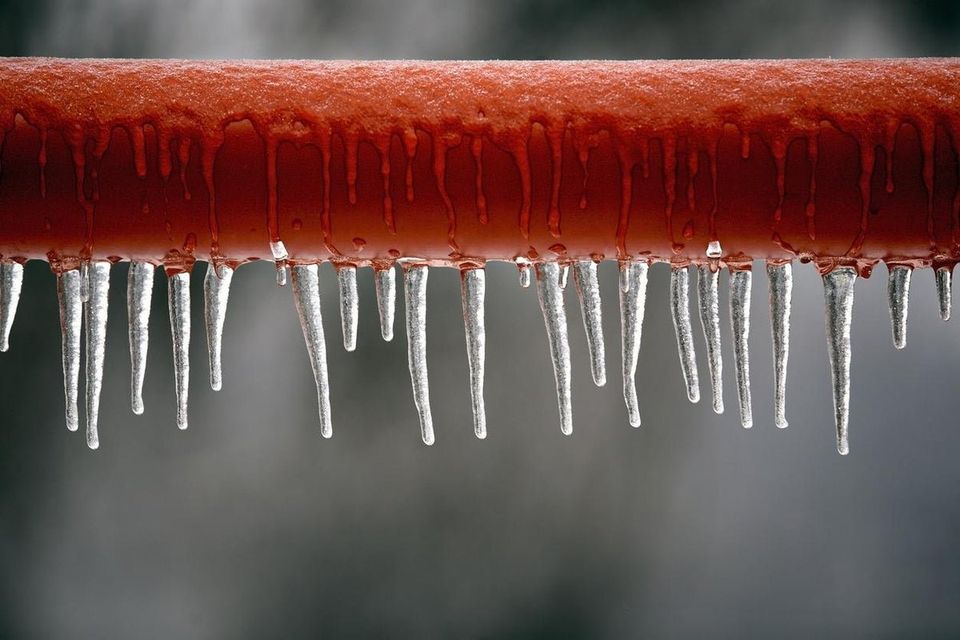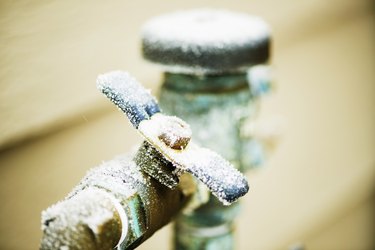Everyone will have their private conception when it comes to Prevent Frozen Pipes .

Winter can wreak havoc on your plumbing, especially by freezing pipelines. Below's just how to prevent it from happening and what to do if it does.
Introduction
As temperatures decrease, the danger of frozen pipes boosts, potentially causing expensive repair services and water damages. Recognizing how to avoid icy pipelines is crucial for property owners in chilly environments.
Avoidance Tips
Insulating susceptible pipes
Wrap pipelines in insulation sleeves or utilize warmth tape to shield them from freezing temperature levels. Focus on pipelines in unheated or external areas of the home.
Heating techniques
Maintain interior spaces adequately heated, specifically areas with pipes. Open closet doors to permit cozy air to flow around pipes under sinks.
Exactly how to identify icy pipes
Try to find decreased water circulation from faucets, uncommon smells or noises from pipes, and noticeable frost on exposed pipes.
Long-Term Solutions
Structural changes
Consider rerouting pipes away from exterior walls or unheated areas. Add additional insulation to attic rooms, cellars, and crawl spaces.
Updating insulation
Buy high-quality insulation for pipes, attics, and wall surfaces. Correct insulation aids keep regular temperature levels and minimizes the danger of frozen pipelines.
Shielding Exterior Plumbing
Garden hoses and exterior faucets
Disconnect and drain pipes yard hose pipes prior to wintertime. Set up frost-proof spigots or cover exterior faucets with shielded caps.
Comprehending Frozen Pipes
What creates pipelines to freeze?
Pipes freeze when exposed to temperatures below 32 ° F (0 ° C) for extended periods. As water inside the pipes freezes, it expands, putting pressure on the pipe walls and potentially creating them to rupture.
Dangers and damages
Icy pipelines can cause water supply disruptions, property damage, and costly repairs. Ruptured pipelines can flood homes and cause comprehensive architectural damages.
Indications of Frozen Pipes
Recognizing frozen pipelines early can prevent them from bursting.
What to Do If Your Pipes Freeze
Immediate actions to take
If you suspect frozen pipelines, maintain faucets available to ease pressure as the ice melts. Make use of a hairdryer or towels taken in hot water to thaw pipes gradually.
Final thought
Avoiding frozen pipelines needs proactive procedures and quick responses. By recognizing the causes, indicators, and preventive measures, homeowners can secure their plumbing during winter.
5 Ways to Prevent Frozen Pipes
Drain Outdoor Faucets and Disconnect Hoses
First, close the shut-off valve that controls the flow of water in the pipe to your outdoor faucet. Then, head outside to disconnect and drain your hose and open the outdoor faucet to allow the water to completely drain out of the line. Turn off the faucet when done. Finally, head back to the shut-off valve and drain the remaining water inside the pipe into a bucket or container. Additionally, if you have a home irrigation system, you should consider hiring an expert to clear the system of water each year.
Insulate Pipes
One of the best and most cost-effective methods for preventing frozen water pipes is to wrap your pipes with insulation. This is especially important for areas in your home that aren’t exposed to heat, such as an attic. We suggest using foam sleeves, which can typically be found at your local hardware store.
Keep Heat Running at 65
Your pipes are located inside your walls, and the temperature there is much colder than the rest of the house. To prevent your pipes from freezing, The Insurance Information Institute suggests that you keep your home heated to at least 65 degrees, even when traveling. You may want to invest in smart devices that can keep an eye on the temperature in your home while you’re away.
Leave Water Dripping
Moving water — even a small trickle — can prevent ice from forming inside your pipes. When freezing temps are imminent, start a drip of water from all faucets that serve exposed pipes. Leaving a few faucets running will also help relieve pressure inside the pipes and help prevent a rupture if the water inside freezes.
Open Cupboard Doors
Warm your kitchen and bathroom pipes by opening cupboards and vanities. You should also leave your interior doors ajar to help warm air circulate evenly throughout your home.

Hopefully you enjoyed our part on How to Prevent Your Pipes From Freezing. Thanks for taking the time to read through our piece. Sharing is good. You never know, you may be doing someone a favor. I recognize the value of reading our article about Helpful Tips to Prevent Frozen Pipes this Winter.
Contact Us